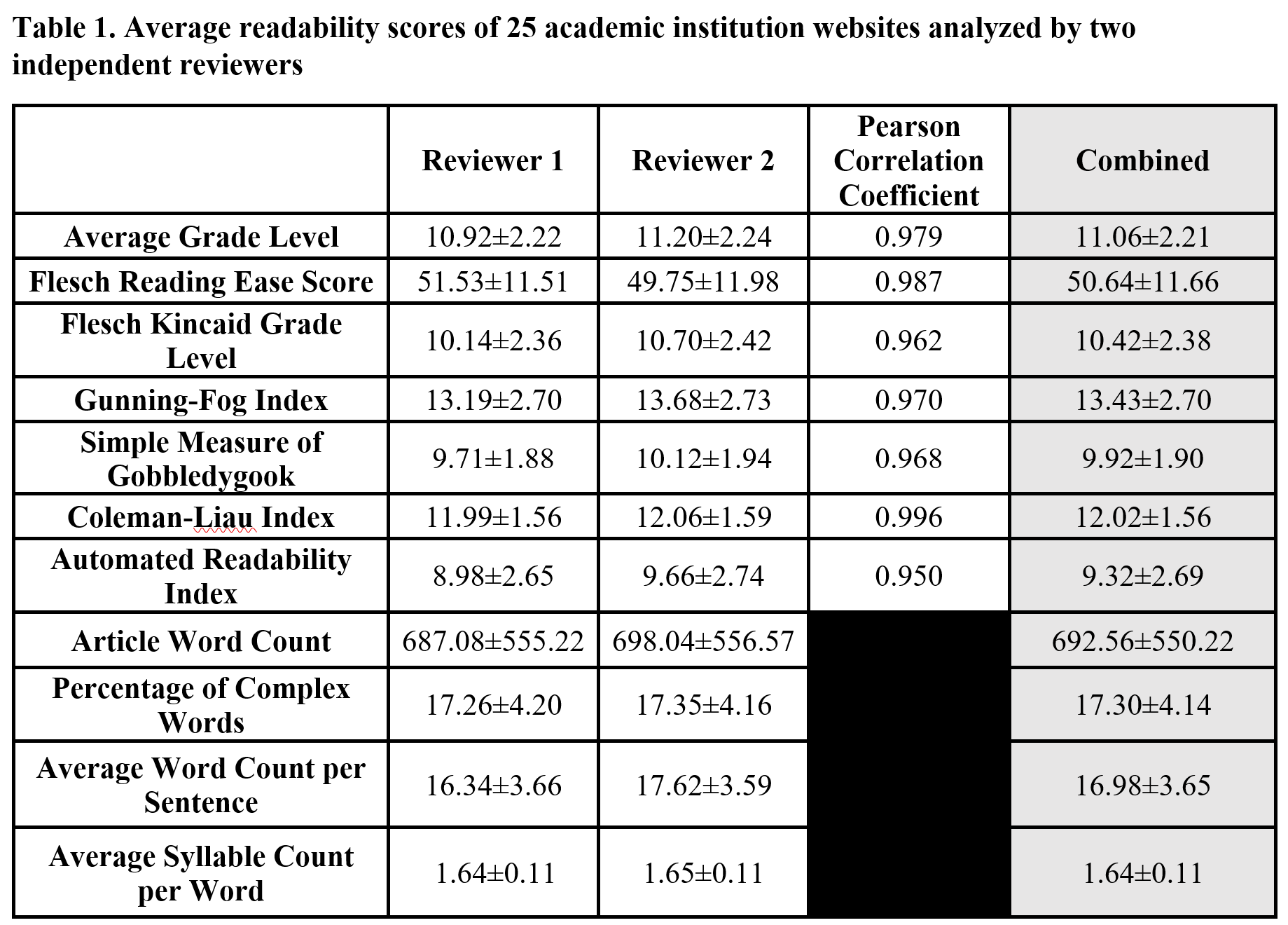Back
Poster, Podium & Video Sessions
Moderated Poster
MP08: Pediatric Urology: Penis & Scrotum
MP08-05: Evaluating the quality of online health educational resources regarding hypospadias diagnosis and treatment
Friday, May 13, 2022
10:30 AM – 11:45 AM
Location: Room 225
Yash Shah*, Nathan Hyacinthe, Philadelphia, PA, Nicolas Fernandez, Seattle, WA, Carlos Villanueva, Phoenix, AZ, Paige Bosse, Melise Keays, Ottawa, Canada, Christopher Long, Philadelphia, PA

Yash B. Shah, BS (he/him/his)
Jefferson
Poster Presenter(s)
Introduction: A diagnosis of hypospadias can be overwhelming for parents. Online patient and parental educational materials are frequently used by patients and family members as supplemental information to assist in understanding their child’s condition, for medical decision making, and for understanding post-surgery care. 98% of parents utilize the Internet for pediatric health advice. It is recommended that online resources be structured at a 6th grade level to ensure broad applicability and comprehension. We hypothesized that academic fellowship training institutional websites would exceed the average American adult’s reading level, impairing patient or caregiver understanding.
Methods: Online hypospadias educational material from all pediatric teaching hospitals with accredited Society of Pediatric Urology training programs in the US and Canada were compiled. Two reviewers independently edited text to remove extraneous information and calculated readability scores using Flesch Reading Ease Score (FRES), Flesch-Kincaid Grade Level (FKGL), Gunning-Fog Index (GFI), Simple Measure of Gobbledygook (SMOG), Coleman-Liau Index (CLI), and Automated Readability Index (ARI). Intra- and inter-observer reliability were measured.
Results: Of the 25 online hypospadias educational materials studied, the mean grade level across 5 tests was 11.06±2.21 (Table 1), with a wide range of grade levels across institutions from 7 to 13. None met the recommended 6th grade level. Altogether, the FRES was 50.64±11.66. This is classified as Fairly Difficult with an estimated 10-12 reading grade and 54% of U.S. adult comprehension. 17.30% of words were designated as complex. Only 1 institution had educational materials in a language other than English.
Intra- and inter-observer reliability were excellent, with the Pearson correlation coefficient for each tool =0.95.
Conclusions: Our findings indicate that online hypospadias resources published by leading pediatric hospitals are written above the recommended reading level for patient and caregiver education. Complex word usage was high and there was little information for non-English speaking patients. A standard for online resources for parental education that meets broad comprehension goals should be established to improve awareness and outcomes.
Source of Funding: None

Methods: Online hypospadias educational material from all pediatric teaching hospitals with accredited Society of Pediatric Urology training programs in the US and Canada were compiled. Two reviewers independently edited text to remove extraneous information and calculated readability scores using Flesch Reading Ease Score (FRES), Flesch-Kincaid Grade Level (FKGL), Gunning-Fog Index (GFI), Simple Measure of Gobbledygook (SMOG), Coleman-Liau Index (CLI), and Automated Readability Index (ARI). Intra- and inter-observer reliability were measured.
Results: Of the 25 online hypospadias educational materials studied, the mean grade level across 5 tests was 11.06±2.21 (Table 1), with a wide range of grade levels across institutions from 7 to 13. None met the recommended 6th grade level. Altogether, the FRES was 50.64±11.66. This is classified as Fairly Difficult with an estimated 10-12 reading grade and 54% of U.S. adult comprehension. 17.30% of words were designated as complex. Only 1 institution had educational materials in a language other than English.
Intra- and inter-observer reliability were excellent, with the Pearson correlation coefficient for each tool =0.95.
Conclusions: Our findings indicate that online hypospadias resources published by leading pediatric hospitals are written above the recommended reading level for patient and caregiver education. Complex word usage was high and there was little information for non-English speaking patients. A standard for online resources for parental education that meets broad comprehension goals should be established to improve awareness and outcomes.
Source of Funding: None


.jpg)
.jpg)